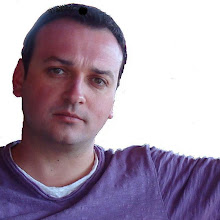Peter’s Monthly Foot and Ankle Column
Overleigh Roundabout Magazine Nov 2009
Talkabout Publishing (Chester) Ltd.
I am alarmed when I read running magazines today. They - and the corporate giant trainer retailers - speak of ‘Pronation’ as a disease that needs to be avoided at all costs.
In this month’s article, I will discuss what pronation is, why it is normal, and when EXCESS-pronation reaches an extreme level that it needs treatment.
So What is pronation?
Pronation a medical term affecting several joints in the body. In terms of our feet, it is basically a flattening of the long arch of the foot, coupled with an everted rolling inward of the heel (specifically the sub-talar joint) and a slight ‘out-splay’ of the whole foot. Pronation is ‘tri-planar’ in that it makes the foot move in the three planes of anatomical function.
The thing I want to stress it that a degree of pronation is normal and necessary during the gait cycle. It allows the foot to adapt to the ground and puts us into “Shock-absorbing” mode. Pronation is natural and not a biomechanical curse. Do not buy trainers or ‘off-the-shelf- insoles just because you think you should decelerate pronation. For one thing you may not need such deceleration… in fact, you may even be a ‘fixed supinator’ who needs to be thrown into pronation!
When it comes to pronation, you only have a problem if you are going too far, excessively pronating and noticing symptoms or pain.
You usually have excessive pronation if your feet leave a complete “flat foot wet print” when you look at a tiled floor surface after showering/swimming etc. The low arch in this foot type is usually associated with overpronation and this is when the foot strikes on the outside of the heel and then rolls inwards too far (NB: other foot types can overpronate). If this is allowed to continue it can cause many different types of injury. With over pronation, the arch flattens, collapses, and soft tissues stretch. This causes the joint surfaces to articulate at improper angles to each other. When this happens, joints that were stable can now become hypermobile.
At first, this may cause fatigue. Symptoms can then manifest in many different ways. The associated conditions can depend on the individual lifestyle of each patient. As the problem gets worse, strain on the muscles, tendons, and ligaments of the foot and lower leg can cause permanent problems and deformities. When standing, your heels lean inward, this is turn makes one or both of your knee caps turn inward. Permanent conditions such as a flat feet or bunions may occur. This may affect your pelvis and lower back. You can also quickly wear out the soles and heels of your shoes.
After your condition has been confirmed by a biomechanics podiatrist, management can take several forms. Some bespoke orthotics (insoles) made from a flexible carbon-fibre shell can support your subtalar joint, mid-foot joint and medial arch during gait. If the heel and ankle collapse is making your big toe joint stiffen (with or without bunions), an extra orthotic feature will start to promote movement at that joint too. Be careful about using off-the-shelf orthotics in shops until you have taken podiatric advice… you could make the condition worse.
Your podiatrist can also provide you will exercises to strengthen your medial arch and relieve pain in any lower limb (foot/leg/hip) joints. Onward referral for musculo-skeletal care or even surgery may sometimes be indicated.
Good footwear advice is also essential. Over-pronating walkers and runners should look for straight or semicurved shoe soles which have firm midsoles and medial arch control features and support. Avoid excessively cushioned, fully curve-lasted trainers which will promote instability stability and poor control during the pronatory phase of gait.
Would you like a podiatric assessment? You can speak to Peter on 07880 702475 or call the clinic on 01244 682500 to book an appointment.
Resume
Peter is the Resident Podiatrist at The Chiropractic Clinic. His Podiatric Medicine Degree is from QMU Edinburgh and he is registered with the HPC and the Society of Podiatrists. Peter's specialist areas of interest are Biomechanical assessments, x-ray referral/analysis pathways and podo-paediatrics (Children's walking problems). Peter is also an Expert Witness and has written numerous published articles and has a wealth of experience in all forms of foot and ankle related problems. Peter works from our Chester Clinic.
Thursday, 12 November 2009
Subscribe to:
Post Comments (Atom)


No comments:
Post a Comment